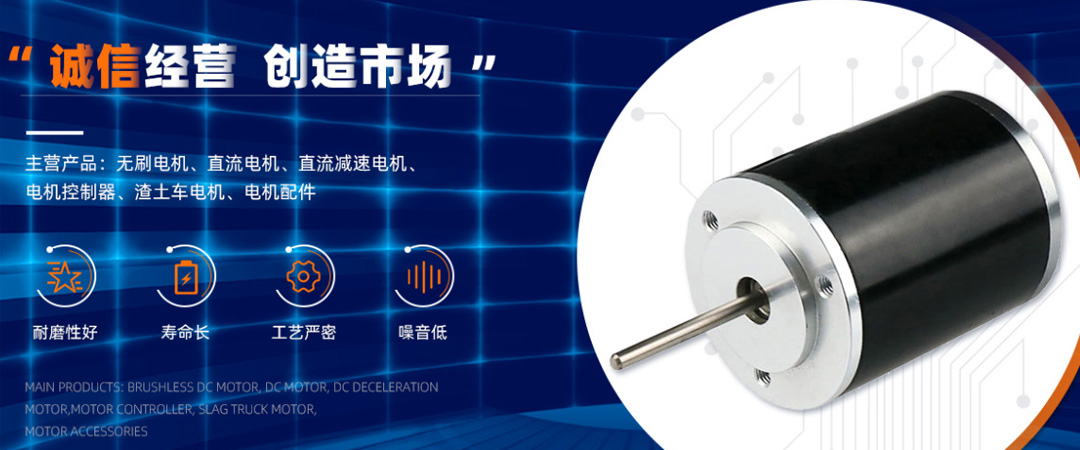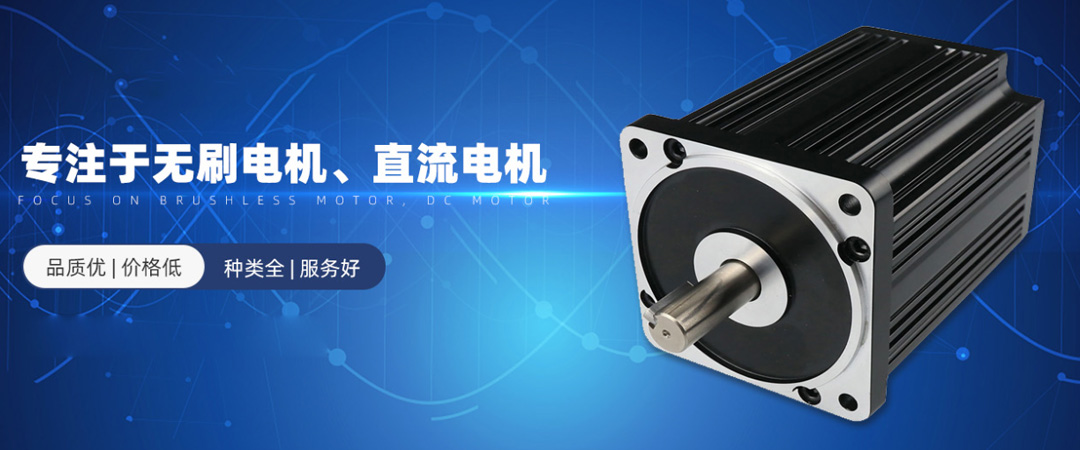Can brushless motors be reversed
Brushless motor, also known as BLDC motor, is an induction motor that does not use electric brushes and bearings for transmission. Compared to traditional brush motors, brushless motors have advantages such as low noise, high speed, high efficiency, long lifespan, and small footprint. Therefore, they are widely used in fields such as electric tools, automobiles, and drones.
1、 The reason why brushless motors cannot rotate forward and backward
A brushless motor consists of three parts: electronic control, drive, and motor. The electronic control controls the direction of rotation of the motor by controlling the Hall sensor inside the motor, so the forward and reverse rotation of the brushless motor is determined by the electronic control board. To achieve forward and reverse rotation, it is necessary to change the direction of the current in both windings. The inability to achieve forward and reverse rotation may be caused by the following reasons:
1. Motor wiring error
If the wiring of the brushless motor is incorrect, it will cause the motor to be unable to achieve forward and reverse rotation. Therefore, check whether the wiring of the brushless motor is accurate and ensure that the connections between various electronic components are correct and error free.
2. Malfunction of the electronic control board
The malfunction of the electronic control board will affect the forward and reverse rotation function of the motor. The problem can be solved by replacing the electronic control board.
3. Gyroscope calibration issues
When using drones and other devices, the calibration of gyroscopes may also cause the motor to be unable to rotate in both directions. At this point, it is necessary to recalibrate the gyroscope to correct the issue.
2、 How to solve the problem of forward and reverse rotation
1. Check if the wiring of the brushless motor is correct, including the connection between the motor and the regulator, as well as the locator and Hall element of the motor.
If there is no problem with the wiring, you can check if the electrical regulator is working properly. If necessary, the ESC can be replaced to solve the problem.
If there is a calibration issue with the gyroscope, it can be recalibrated.
Brushless motors, as an effective and low-noise motor, are widely used. When there is a problem with forward and reverse rotation, it is necessary to check the possible causes such as motor wiring, electronic control board faults, and gyroscope calibration, and take corresponding solutions. By addressing these issues, it is possible to ensure the normal operation of the brushless motor.
1、 The reason why brushless motors cannot rotate forward and backward
A brushless motor consists of three parts: electronic control, drive, and motor. The electronic control controls the direction of rotation of the motor by controlling the Hall sensor inside the motor, so the forward and reverse rotation of the brushless motor is determined by the electronic control board. To achieve forward and reverse rotation, it is necessary to change the direction of the current in both windings. The inability to achieve forward and reverse rotation may be caused by the following reasons:
1. Motor wiring error
If the wiring of the brushless motor is incorrect, it will cause the motor to be unable to achieve forward and reverse rotation. Therefore, check whether the wiring of the brushless motor is accurate and ensure that the connections between various electronic components are correct and error free.
2. Malfunction of the electronic control board
The malfunction of the electronic control board will affect the forward and reverse rotation function of the motor. The problem can be solved by replacing the electronic control board.
3. Gyroscope calibration issues
When using drones and other devices, the calibration of gyroscopes may also cause the motor to be unable to rotate in both directions. At this point, it is necessary to recalibrate the gyroscope to correct the issue.
2、 How to solve the problem of forward and reverse rotation
1. Check if the wiring of the brushless motor is correct, including the connection between the motor and the regulator, as well as the locator and Hall element of the motor.
If there is no problem with the wiring, you can check if the electrical regulator is working properly. If necessary, the ESC can be replaced to solve the problem.
If there is a calibration issue with the gyroscope, it can be recalibrated.
Brushless motors, as an effective and low-noise motor, are widely used. When there is a problem with forward and reverse rotation, it is necessary to check the possible causes such as motor wiring, electronic control board faults, and gyroscope calibration, and take corresponding solutions. By addressing these issues, it is possible to ensure the normal operation of the brushless motor.



